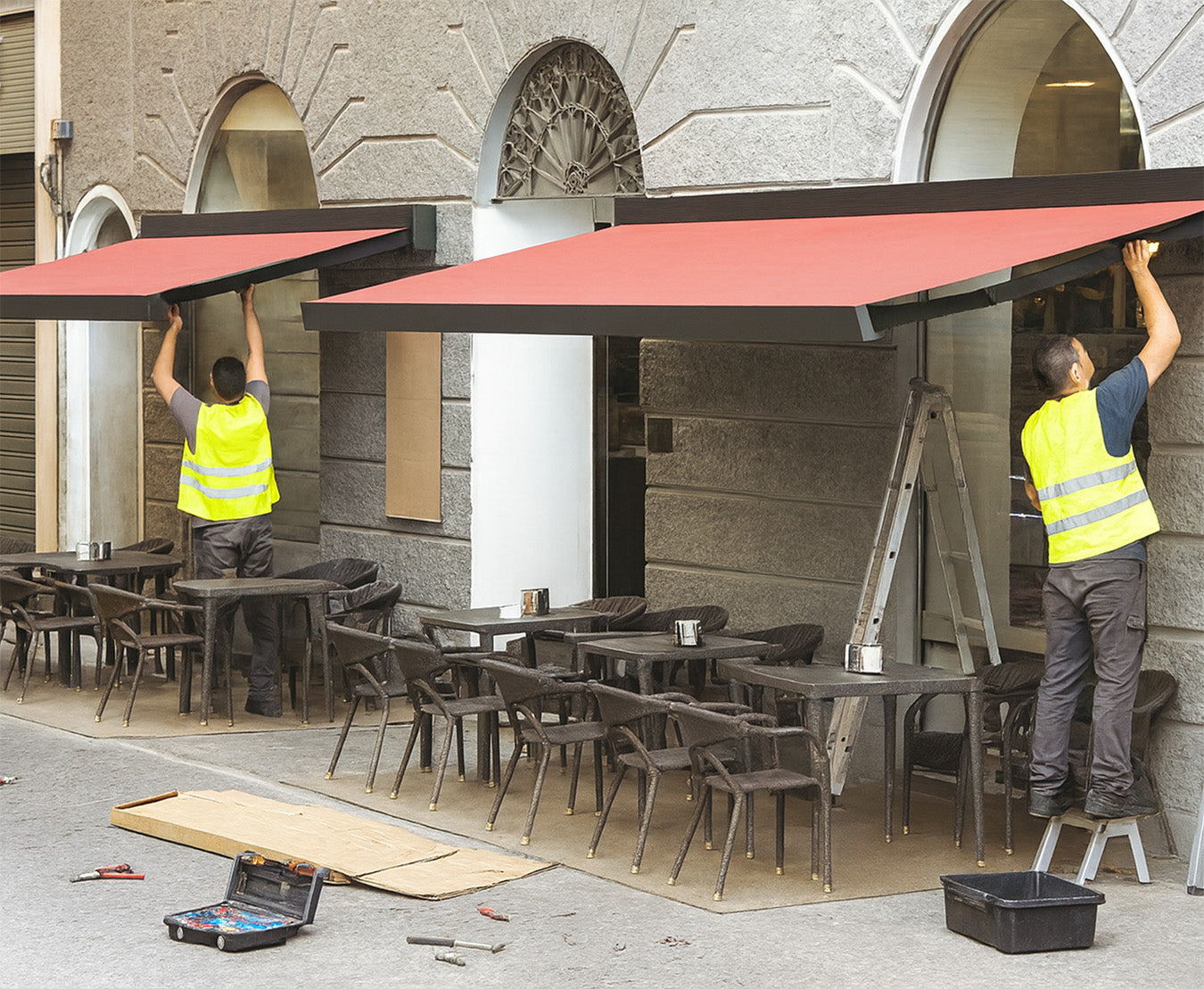Patio awnings are one of the most popular ways to bring indoor comfort into the garden. For homeowners, they provide shade in summer and shelter in autumn showers. For cafés, pubs, and shops, they create style, branding, and all-important cover for customers.
But a question we hear all the time at Outside Structures is:
👉 “Do I need planning permission for an awning?”
The answer isn’t always straightforward. While many domestic awnings fall under permitted development (PD) rights, others, particularly in London, conservation areas, listed buildings, or commercial shopfronts, will need approval. Here’s what you need to know.
Domestic Awnings, Do You Need Permission?
For most homeowners in England, a garden awning can be installed without planning permission if:
· It’s installed at the rear of your property.
· It does not extend beyond the building line at the front.
· It is proportional in size and appearance to your home.
Most retractable patio awnings fall comfortably into this category. That means you can usually add one without paperwork, unless you’re in a special planning zone such as a London borough conservation area.
When Planning Permission Is Required
There are circumstances where planning rules become stricter:
· Conservation areas: Local authorities, particularly in historic parts of London, Hertfordshire, and Cambridge, often restrict changes to visible façades.
· Listed buildings: Any external alteration almost always requires listed building consent.
· Commercial shopfronts: Hospitality and retail premises frequently need permission, especially if the awning projects over the pavement.
· Large or motorised awnings: Oversized installations or multiple units may attract closer scrutiny.
👉 If in doubt, always check with your local planning authority. Councils across London and the South East interpret guidelines differently.
Shopfront Awnings, What Businesses Need to Know
For restaurants, cafés, and pubs, awnings can transform outdoor seating. But the rules are more complex:
· Planning permission is usually required if the awning alters the building’s appearance.
· Advertising consent may be needed if your awning includes branding or logos.
· Highways approval can apply if the awning extends over a public pavement.
In busy hospitality hubs like Central London, Cambridge, Chelmsford, and St Albans, councils are particularly strict. The good news is that once approved, awnings can help businesses increase capacity, especially under the new permanent pavement licence system.
Why These Rules Matter
Complying with planning regulations ensures:
· Peace of mind: Avoid costly enforcement action or forced removal.
· Property value: Keeps your home or business records clean for the future.
· Professional credibility: For hospitality venues, compliance reassures both customers and councils.
Outside Structures, Your Awning Experts
At Outside Structures, we don’t just install awnings. we help clients navigate the planning landscape too. Whether you’re a homeowner in London, Hertfordshire or Cambridgeshire, or a restaurant owner in Essex or across the South East, we’ll guide you through:
· Choosing the right patio or shopfront awning.
· Checking if planning permission is required.
· Installing premium, wind-resistant awnings built for the UK climate.
Conclusion
So, do awnings need planning permission in England? For most homes, no. For shopfronts, listed buildings, conservation areas, and many London properties, yes. The safest route is always to double-check.
👉 Thinking about an awning for your home or business? Explore our awning range and let Outside Structures help you create the perfect outdoor space, with expert advice on planning, design, and installation.

